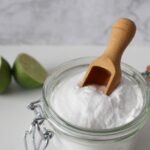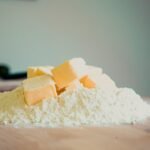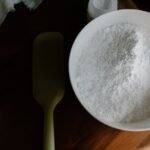Exploring Sugar Substitutes for Baking: A Comprehensive Guide
Baking has long been a beloved pastime, offering comfort and satisfaction with every delicious creation. However, with increasing awareness of the health risks associated with excessive sugar consumption, many people are seeking alternatives to traditional sugar in their baking endeavors. Fortunately, there is a wide array of sugar substitutes available, each with its unique characteristics and benefits. In this article, we will explore the most popular sugar substitutes for baking, their properties, and how to use them effectively in your favorite recipes
Understanding Sugar Substitutes
Before delving into specific sugar substitutes, it’s essential to understand what they are and how they differ from traditional sugar. Sugar substitutes are ingredients that can mimic the sweetness of sugar without the same calorie content or impact on blood sugar levels. They can be divided into two main categories: artificial sweeteners and natural sweeteners.
Artificial Sweeteners
Artificial sweeteners are synthetic compounds that provide sweetness without calories. They are often much sweeter than sugar, so only small amounts are needed. Some common artificial sweeteners used in baking include:
- Aspartame: Aspartame is one of the most popular artificial sweeteners and is commonly found in sugar-free desserts and beverages. It is heat-stable and can be used in baking, but it may not provide the same texture and browning as sugar.
- Sucralose: Sucralose, sold under the brand name Splenda, is another widely used artificial sweetener. It is heat-stable and can be used in baking without losing its sweetness.
- Saccharin: Saccharin is one of the oldest artificial sweeteners and is commonly used in tabletop sweeteners. It is heat-stable and can be used in baking, but it may have a slightly bitter aftertaste in large quantities.
Natural Sweeteners
Natural sweeteners are derived from plants and offer a more natural alternative to sugar. They often contain fewer calories than sugar and may have additional health benefits. Some popular natural sweeteners for baking include:
- Stevia: Stevia is a natural sweetener derived from the leaves of the Stevia rebaudiana plant. It is intensely sweet and has zero calories. Stevia is heat-stable and can be used in baking, but its intense sweetness may require some adjustment to recipes.
- Erythritol: Erythritol is a sugar alcohol that occurs naturally in some fruits and fermented foods. It has about 70% of the sweetness of sugar and only a fraction of the calories. Erythritol is heat-stable and can be used in baking, but it may have a cooling effect when consumed in large quantities.
- Monk Fruit Sweetener: Monk fruit sweetener is derived from the monk fruit, a small gourd native to China. It is much sweeter than sugar and has zero calories. Monk fruit sweetener is heat-stable and can be used in baking, but its intense sweetness may require adjustment to recipes.
Tips for Baking with Sugar Substitutes
When using sugar substitutes in baking, it’s essential to consider their unique properties and how they may affect the outcome of your recipe. Here are some tips for baking with sugar substitutes:
- Adjust sweetness: Sugar substitutes are often much sweeter than sugar, so you may need to adjust the amount used in your recipe. Start with a smaller amount and taste the batter as you go to avoid making it too sweet.
- Consider texture: Sugar plays a crucial role in the texture of baked goods, providing moisture and contributing to browning. When using sugar substitutes, you may need to make adjustments to achieve the desired texture and color.
- Experiment with blends: To achieve the best results, consider using a combination of sugar substitutes. For example, combining stevia with erythritol can help mitigate any aftertaste while providing sweetness and bulk.
- Be mindful of heat stability: Not all sugar substitutes are heat-stable, so it’s essential to choose one that can withstand baking temperatures without losing its sweetness.
Sugar substitutes offer a versatile and convenient alternative to traditional sugar in baking. Whether you’re looking to reduce your sugar intake, manage your weight, or accommodate dietary restrictions, there is a sugar substitute available to suit your needs. By understanding the properties of different sugar substitutes and how to use them effectively, you can enjoy all the sweetness of baking without the guilt. Experiment with different sugar substitutes in your favorite recipes and discover a world of delicious possibilities.





Hi, this is a comment.
To get started with moderating, editing, and deleting comments, please visit the Comments screen in the dashboard.
Commenter avatars come from Gravatar.
Admiring the commitment you put into your website and detailed information you present. It’s great to come across a blog every once in a while that isn’t the same outdated rehashed material. Excellent read! I’ve saved your site and I’m adding your RSS feeds to my Google account.
I in addition to my friends were found to be following the nice helpful tips on your website then at once got a horrible suspicion I never thanked the web blog owner for those strategies. Most of the young boys were for this reason happy to learn all of them and have now without a doubt been tapping into these things. Thanks for genuinely well helpful and also for utilizing this sort of really good topics millions of individuals are really desperate to know about. Our own sincere regret for not expressing appreciation to you earlier.
Please tell me more about your excellent articles